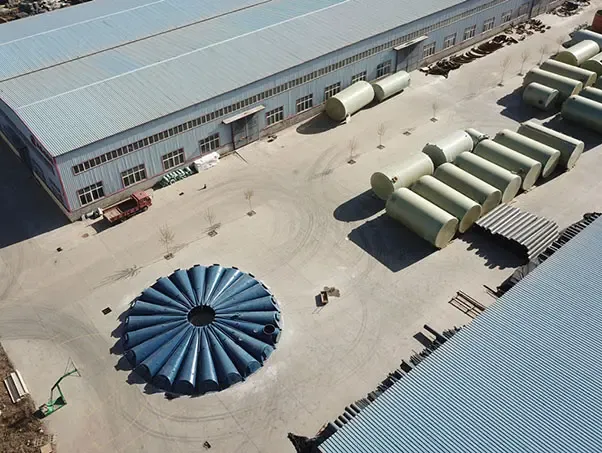
-
 Afrikaans
Afrikaans -
 Albanian
Albanian -
 Amharic
Amharic -
 Arabic
Arabic -
 Armenian
Armenian -
 Azerbaijani
Azerbaijani -
 Basque
Basque -
 Belarusian
Belarusian -
 Bengali
Bengali -
 Bosnian
Bosnian -
 Bulgarian
Bulgarian -
 Catalan
Catalan -
 Cebuano
Cebuano -
 China
China -
 China (Taiwan)
China (Taiwan) -
 Corsican
Corsican -
 Croatian
Croatian -
 Czech
Czech -
 Danish
Danish -
 Dutch
Dutch -
 English
English -
 Esperanto
Esperanto -
 Estonian
Estonian -
 Finnish
Finnish -
 French
French -
 Frisian
Frisian -
 Galician
Galician -
 Georgian
Georgian -
 German
German -
 Greek
Greek -
 Gujarati
Gujarati -
 Haitian Creole
Haitian Creole -
 hausa
hausa -
 hawaiian
hawaiian -
 Hebrew
Hebrew -
 Hindi
Hindi -
 Miao
Miao -
 Hungarian
Hungarian -
 Icelandic
Icelandic -
 igbo
igbo -
 Indonesian
Indonesian -
 irish
irish -
 Italian
Italian -
 Japanese
Japanese -
 Javanese
Javanese -
 Kannada
Kannada -
 kazakh
kazakh -
 Khmer
Khmer -
 Rwandese
Rwandese -
 Korean
Korean -
 Kurdish
Kurdish -
 Kyrgyz
Kyrgyz -
 Lao
Lao -
 Latin
Latin -
 Latvian
Latvian -
 Lithuanian
Lithuanian -
 Luxembourgish
Luxembourgish -
 Macedonian
Macedonian -
 Malgashi
Malgashi -
 Malay
Malay -
 Malayalam
Malayalam -
 Maltese
Maltese -
 Maori
Maori -
 Marathi
Marathi -
 Mongolian
Mongolian -
 Myanmar
Myanmar -
 Nepali
Nepali -
 Norwegian
Norwegian -
 Norwegian
Norwegian -
 Occitan
Occitan -
 Pashto
Pashto -
 Persian
Persian -
 Polish
Polish -
 Portuguese
Portuguese -
 Punjabi
Punjabi -
 Romanian
Romanian -
 Russian
Russian -
 Samoan
Samoan -
 Scottish Gaelic
Scottish Gaelic -
 Serbian
Serbian -
 Sesotho
Sesotho -
 Shona
Shona -
 Sindhi
Sindhi -
 Sinhala
Sinhala -
 Slovak
Slovak -
 Slovenian
Slovenian -
 Somali
Somali -
 Spanish
Spanish -
 Sundanese
Sundanese -
 Swahili
Swahili -
 Swedish
Swedish -
 Tagalog
Tagalog -
 Tajik
Tajik -
 Tamil
Tamil -
 Tatar
Tatar -
 Telugu
Telugu -
 Thai
Thai -
 Turkish
Turkish -
 Turkmen
Turkmen -
 Ukrainian
Ukrainian -
 Urdu
Urdu -
 Uighur
Uighur -
 Uzbek
Uzbek -
 Vietnamese
Vietnamese -
 Welsh
Welsh -
 Bantu
Bantu -
 Yiddish
Yiddish -
 Yoruba
Yoruba -
 Zulu
Zulu
Innovative Concepts for FRP Hood Design and Applications in Various Industries
The Importance of FRP Hoods in Modern Applications
Fiberglass Reinforced Plastic (FRP) hoods have garnered significant attention in various industries due to their unique properties and advantages over traditional materials. As we delve into the world of composite materials, it becomes essential to understand what FRP hoods are, their applications, and the benefits they bring to the table.
FRP, or fiberglass reinforced plastic, is a composite material made from a polymer matrix reinforced with fibers. The fibers can be glass, carbon, or aramid, with fiberglass being the most common. FRP is particularly well-known for its lightweight yet durable properties, chemical resistance, and ease of molding into complex shapes. Hoods, which are protective coverings used in various applications such as automotive, marine, and industrial equipment, can be efficiently crafted from this versatile material.
Applications of FRP Hoods
The applications of FRP hoods are both diverse and extensive. In the automotive industry, these hoods are increasingly being used in high-performance vehicles. With the need for lowering vehicle weight for better fuel efficiency and performance, manufacturers are turning to lightweight materials like FRP. The hoods not only contribute to the vehicle's overall weight reduction but also offer design flexibility, allowing for more aerodynamic and aesthetically pleasing shapes.
In the marine sector, FRP hoods are also popular. Boats and yachts require components that can withstand harsh marine environments, including saltwater and UV exposure. The corrosion-resistant nature of FRP makes it ideal for such conditions, as it does not rust or degrade like metal. Additionally, FRP hoods can provide excellent insulation, maintaining the thermal stability of the equipment they cover.
The industrial sector benefits from FRP hoods as well, particularly in manufacturing plants and chemical processing facilities. Equipment requiring protection from harsh chemicals and environmental factors can be effectively shielded using FRP hoods. Their robustness against corrosive substances makes them an excellent choice for such applications, ensuring longevity and reliability.
frp hood

Advantages of FRP Hoods
There are numerous advantages to using FRP hoods. First and foremost is their lightweight nature, which drastically reduces the overall weight of products without sacrificing strength. This characteristic alone can lead to improved performance and efficiency, particularly in transportation applications.
Furthermore, FRP hoods exhibit excellent chemical resistance, allowing them to endure exposure to various substances without degrading. This characteristic is crucial in chemical and marine applications, where the integrity of the hood is paramount for safety and reliability.
Another significant advantage of FRP hoods is their design flexibility. Manufacturers can mold FRP into a wide variety of shapes, allowing for enhanced customization. This flexibility opens up new possibilities for innovative designs that can cater to specific industry needs.
Lastly, FRP hoods require less maintenance compared to their metal counterparts. They do not suffer from rust or corrosion, resulting in lower lifecycle costs. Thus, individuals and companies can save on maintenance and replacement costs, ultimately benefiting the bottom line.
Conclusion
In conclusion, FRP hoods represent an evolution in material technology, offering significant advantages across various industries. Their lightweight nature, chemical resistance, design flexibility, and low maintenance requirements make them a preferred choice for numerous applications. As industries continue to seek innovative solutions that enhance performance while reducing costs, FRP hoods are likely to play an increasingly important role in the future. Embracing these advanced materials not only boosts efficiency but also contributes to sustainability efforts by reducing the weight and increasing the longevity of essential components.
Latest news
-
High-Quality Fiberglass Car Bodies Durable GRP Car & Boat Body SolutionsNewsJul.08,2025
-
High-Quality Fiberglass Dual Lamination Product Manufacturer Durable FRP & GRP Dual Lamination SolutionsNewsJul.08,2025
-
Rectangular Tank with Dimensions for GRP Calculation Custom Fiberglass GRP Rectangular TanksNewsJul.07,2025
-
High-Quality Fiberglass Weir Custom FRP Weir & Fiberglass Tanks ManufacturerNewsJul.07,2025
-
CPVC FRP Pipe A Reliable Choice for Industrial Applications High Strength & Corrosion ResistanceNewsJul.07,2025
-
Fiberglass Scrubber for Effective Cleaning and Stain Removal – Superior Performance in Various ApplicationsNewsJul.06,2025









